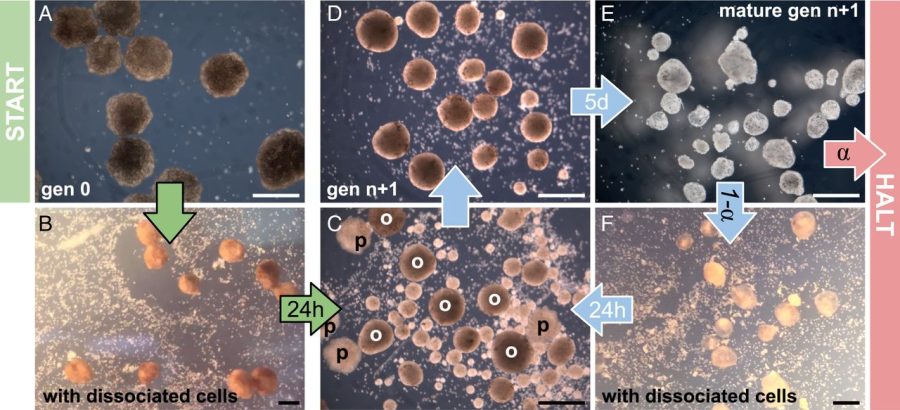Hello, World
Living, reproducing robots and their implications.
Late in 2021, researchers at the University of Vermont observed that their living robots – a project that they had been working on since 2020 – were reproducing. The robots, made from frog cells, were fully designed and built by these scientists. It came as quite a surprise to the researchers when they realized that their project had been self-replicating.
The robots, known as Xenobots, were swimming around their environment, gathering other cells, and using them to build replicas of themselves. Within days, these replica Xenobots could behave just like the originals. These second generation Xenobots are just as capable of reproduction as their parents. This is a form of reproduction that has never been seen before.
The ‘parent’ Xenobots were originally shaped as a sphere. While they were capable of creating offspring, the children would usually die out before they had the chance to attempt any reproduction of their own. This caused researchers to ask the University of Vermont’s supercomputer to design a new shape for the Xenobots that would allow for replication. After months, the computer spit out several potential designs, including one resembling Pac-Man, a circular shape with a triangular ‘mouth’.
Sure enough, when scientists tested the Pac-Man shaped Xenobot, it was able to successfully create children, who could create grandchildren, and so on. The potential number of generations was vastly increased with this new shape.
These little robotic organisms have incredible potential. If scientists can communicate with these robots, they will have a powerful tool for medicine. It is simply a matter of control. Being able to control cells and what they build is essential to regenerative medicine, which could enable limb regrowth. Having control over what cells do could also lead to advancements in finding a cure for cancer.
For now, it seems that we are only able to observe what these amazing creations are capable of. In the near future, however, these abilities, which we hardly dared to hope for previously, could be within reach.


